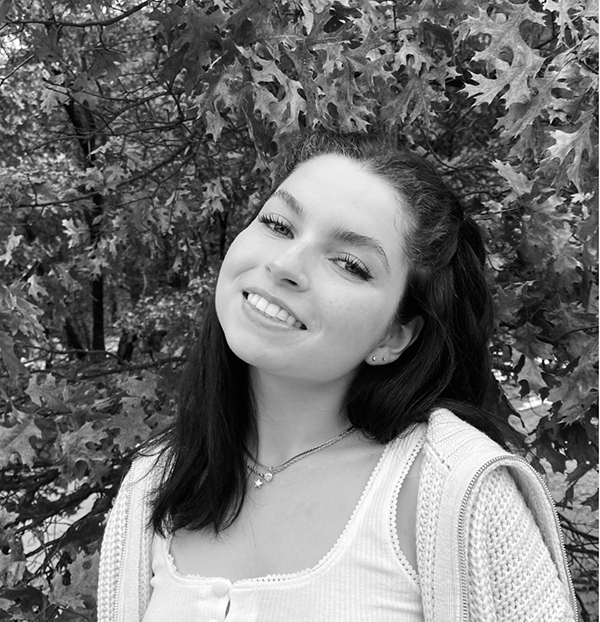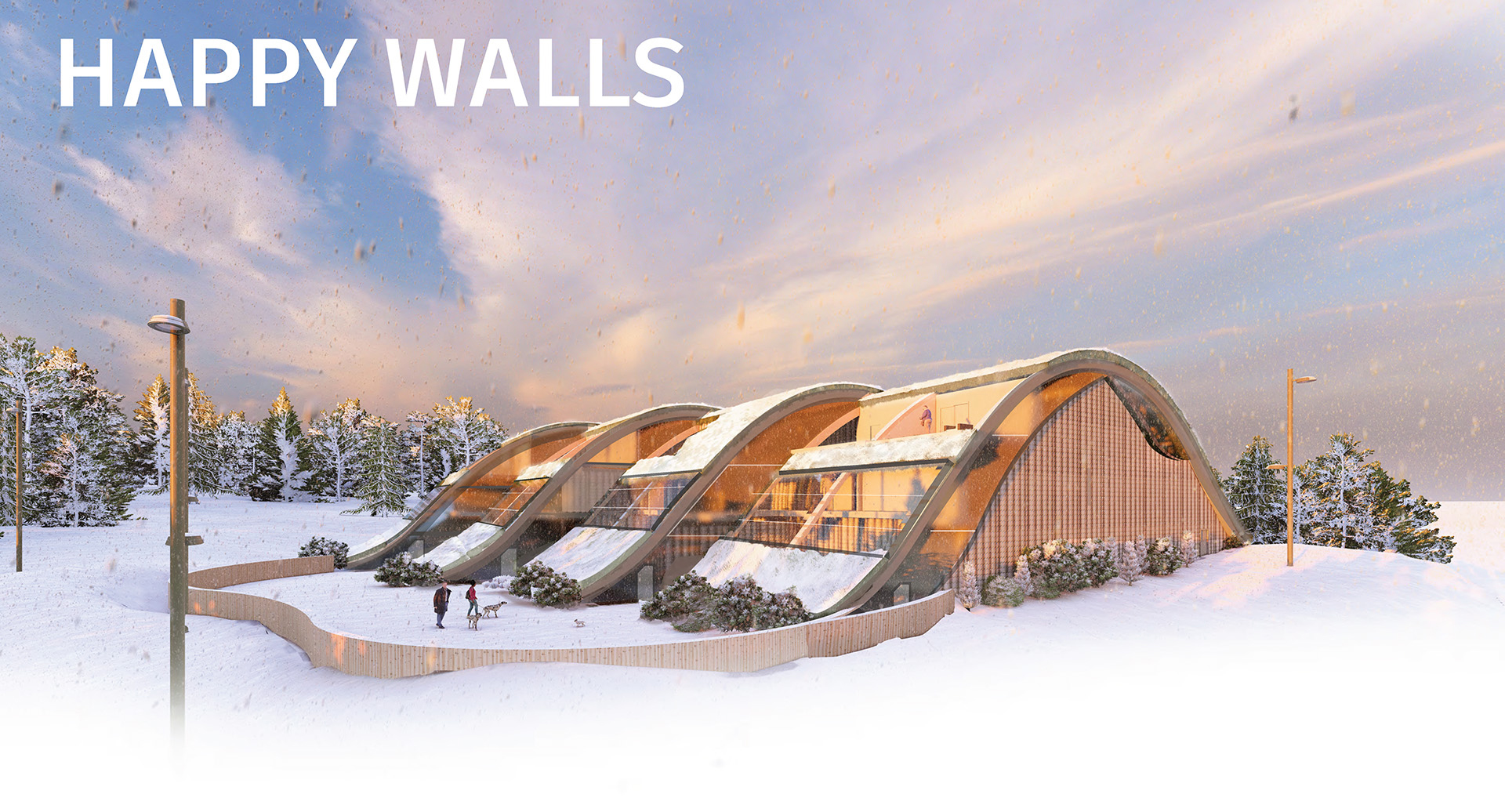Natalie Musielski, a student in the Architecture program at Ferris State University in Michigan, imagined “Happy Walls,” a cooperative apartment complex for graduate students at the University of Alaska Fairbanks that leverages sustainable design principles and the psychological effects of light to counteract the negative mental health impacts of the region’s unusual seasonal light cycles.
Her design placed third in the United States Green Building Council Detroit Region Student Design Competition, where entrants were challenged to prioritize resource conservation and creative use of daylighting, passive heating and cooling, and sustainable materials and energy generation techniques into a cohesive and viable design solution.
 “It’s very exciting. This is the biggest competition I’ve ever submitted work into,” said Musielski. “It feels good to put in all this effort and then receive outside validation that it’s worthwhile.”
“It’s very exciting. This is the biggest competition I’ve ever submitted work into,” said Musielski. “It feels good to put in all this effort and then receive outside validation that it’s worthwhile.”
Inspired by a virtual interaction she had with the Fairbanks-based Cold Climate Housing Research Center, she worked towards a solution to foster mental wellbeing and preserve normal human circadian rhythm in an area where winters bring 21 hours of total darkness per day and the summer months bring 17 hours of sun.
“It was eye-opening to learn about the psychological effects of atypical natural lighting conditions,” Musielski said. “And how much impact not just light exposure, but also the color temperature of the light has on the body’s ability to regulate core functions.”
 “Happy Walls” counteracts the harsh reality of Alaska’s extreme seasons with temperature-changing LED lights embedded between the Ethylene TetrafluoroEthylene plastic panes that compose the building’s large, arched windows and double as an insulation barrier. During winter months, the windows glow and change color temperature as the sky outside would naturally do during a more normal daylight cycle. In the summer months, the LED lights would be disabled, allowing naturally diffused sunlight to enter during the day, while during the night the building’s south-facing transparent solar panels would be covered from the inside by an automated blackout curtain to prevent unwanted natural light from disrupting the interior living spaces.
“Happy Walls” counteracts the harsh reality of Alaska’s extreme seasons with temperature-changing LED lights embedded between the Ethylene TetrafluoroEthylene plastic panes that compose the building’s large, arched windows and double as an insulation barrier. During winter months, the windows glow and change color temperature as the sky outside would naturally do during a more normal daylight cycle. In the summer months, the LED lights would be disabled, allowing naturally diffused sunlight to enter during the day, while during the night the building’s south-facing transparent solar panels would be covered from the inside by an automated blackout curtain to prevent unwanted natural light from disrupting the interior living spaces.
In addition to maximizing radiation for the embedded transparent solar panels and decreasing wind load, the curved form of “Happy Walls” gives the building a sense of belonging in the natural landscape as if it were an extension of it. A contouring green roof covering 10,000 sq. ft. allows it to further mesh with its surroundings, while southern-facing exterior balconies on the second floor allow for outdoor enjoyment when the weather permits.
Any rain not absorbed in the green roof is directed toward rain gardens of native plants at the base of each roof. All parking lots, outdoor spaces, and walking paths are made of permeable pavement that allows rainwater to reach the soil below and vegetation to grow through. On the inside, high ceilings, exposed beams, and abundant use of natural materials create an organic and warm feeling for residents. The design also ensures that 75 percent of all the building’s doors and windows allow for views to nature.
Musielski also tried to minimize water usage, optimize energy performance, utilize recycled and sustainable materials free of harmful chemicals, and prioritize an enhanced indoor air quality system.
“I always knew that I liked doing housing, and this project hammered home the fact that I like working in this space and shaping the experience people have in their lived environment,” she said. “It showed me that there are many different ways to achieve sustainability, and I want to work somewhere that’s a clear priority.”
You can read the original article at www.ferris.edu

